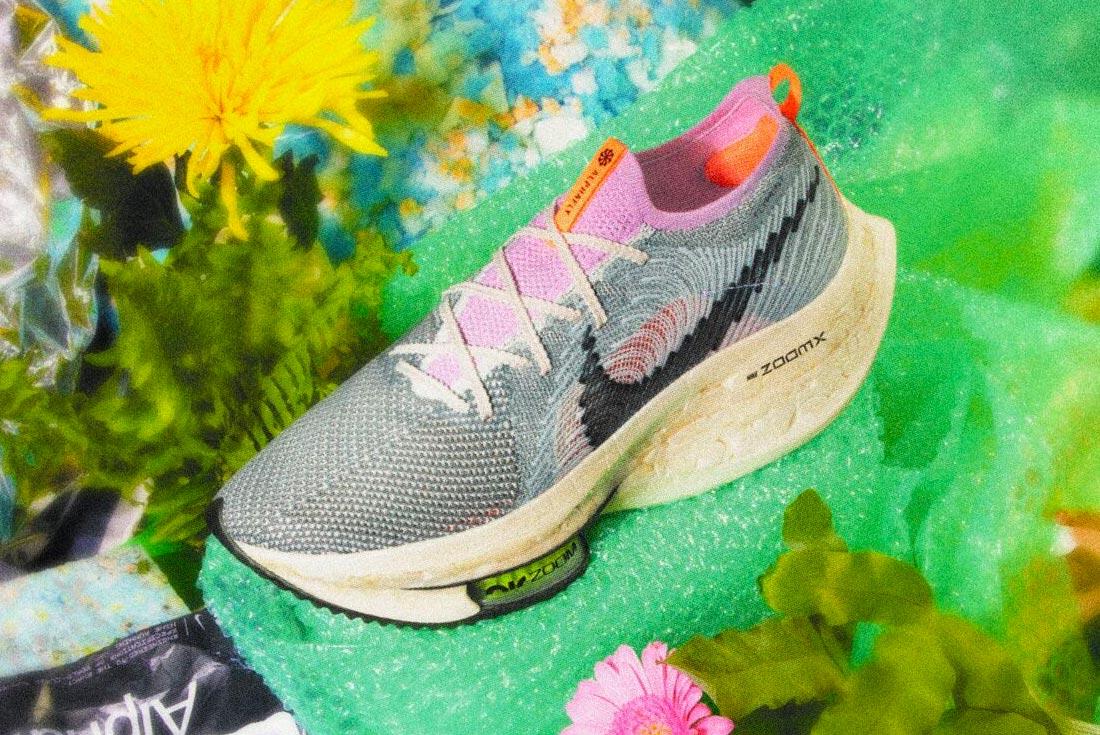Sustainability In the 2021 Sneaker Space
Environmental consciousness within the sneaker space has come a long way over the past few years, with brands redefining the possibilities when it comes to sustainable practice. As consumers continue to voice their opinions on this matter, it’s meant that demand for product that’s responsibly sourced has certainly skyrocketed. Here’s what 2021 had to offer when it came to sustainable sneakers.
Recycled Rebuilds
There are countless new schemes that brands are implementing to strive for a greener future, but one thing they all have in common is recycling. Throughout the latter half of 2020 and this year too, we’ve witnessed a heavy uptick in reused materials, there were so many in fact, that they probably deserve their own feature!
For nearly three decades, have implemented what’s known as Nike Grind into their key products, using recycled waste to craft new goods. That, mixed with their Crater Foam has bred a broad range of their fan-favourite silhouettes that feature recycled components.
The Reduce, Reuse, Recycle ethos also hit the adidas and Reebok camp! Team Trefoil continued their partnership with Parley (more on that later) and adorned many of their mainstays in eco-friendly fabrics like the UltraBOOST DNA 5.0. The Stan Smith going green was talked about heaps this year, and was kitted out in 50 per cent recycled content with no virgin polyester! For the ‘Bok, their longtime Korean high-fashion partners KANGHYUK created a Classic Leather using recycled airbags.
have also been making strides with their initiative, also utilising Nike’s Grind tech and other recycled fabrics. didn’t let their go astray, decking out a duo in what's known as , a recycled polyester mix that contains 30 per cent textile waste. Last but not least, and retailer incorporated eco-friendly elements into their recent collaboration.
Standout Initiatives
While using recycled materials is all well and good when moving toward a sustainable future, there were a few standout initiatives that caught our eye. Dubbed their most sustainably-minded performance shoe to date, the Nike takes elite footwear to a whole new level. Its predecessor, the , boasted a whopping 25 per cent of total recycled content by weight while the Alphafly opts for at least 50 per cent!
From adidas is their continued partnership with Parley Ocean Plastics which began way back in 2015. Since the beginning, the duo have slowly been cutting out the use of virgin polyester in the adidas-branded products and are on track to reach their goal of using only recycled polyester by 2024!
have also not fallen behind in the race toward a sustainable future, and redesigning their boxes so that they require less cardboard. They’re said to be just as strong as the previous box, however they feature 95 per cent recycled cardboard. ‘If we consider that it takes about 12 trees to make a tonne of cardboard, we are saving 33,600 trees every year. That is more than the number of trees in Central Park in New York,’ said Stefan Seidel, Head of Corporate Sustainability at PUMA.
Materials Really Do Matter
We wanted to highlight Nike’s use of a material called in their mission to move toward zero carbon and zero waste. Joining forces with biotech company Newlight, they want to implement the material that they’ve been working on for the past decade. AirCarbon is constructed via oceanic microorganisms, they convert air and greenhouse gas into usable form and can be a replacement for leather or plastic.
SoCal brand are also applying what they like to call to some of their key silhouettes including the , , and . Using more-sustainable materials across the whole shoe, the uppers are now made using organic cotton and the laces are crafted from jute fibre. Coloured components are printed using a water-based ink, the insoles are made with cork and midsoles crafted from rubber sourced responsibly. Vans has promised durability thanks to their new water-based glue.
An insane material innovation from Team Trefoil and their Stan Smith silhouette has been constructed from a mushroom based material. Called , it’s made from Mycelium – a part of certain mushrooms and other funghi. It can be grown in a high-tech lab setting to maximise output in a responsible way.

Steps Toward a Greener Future
Across the board, sneaker brands are definitely becoming more sustainable, making a serious effort to keep the environment in check. Us consumers are also doing our part, copping less and demanding responsible products from all our favourite brands. If you want to up your conscious crep game, then check out our feature, .
